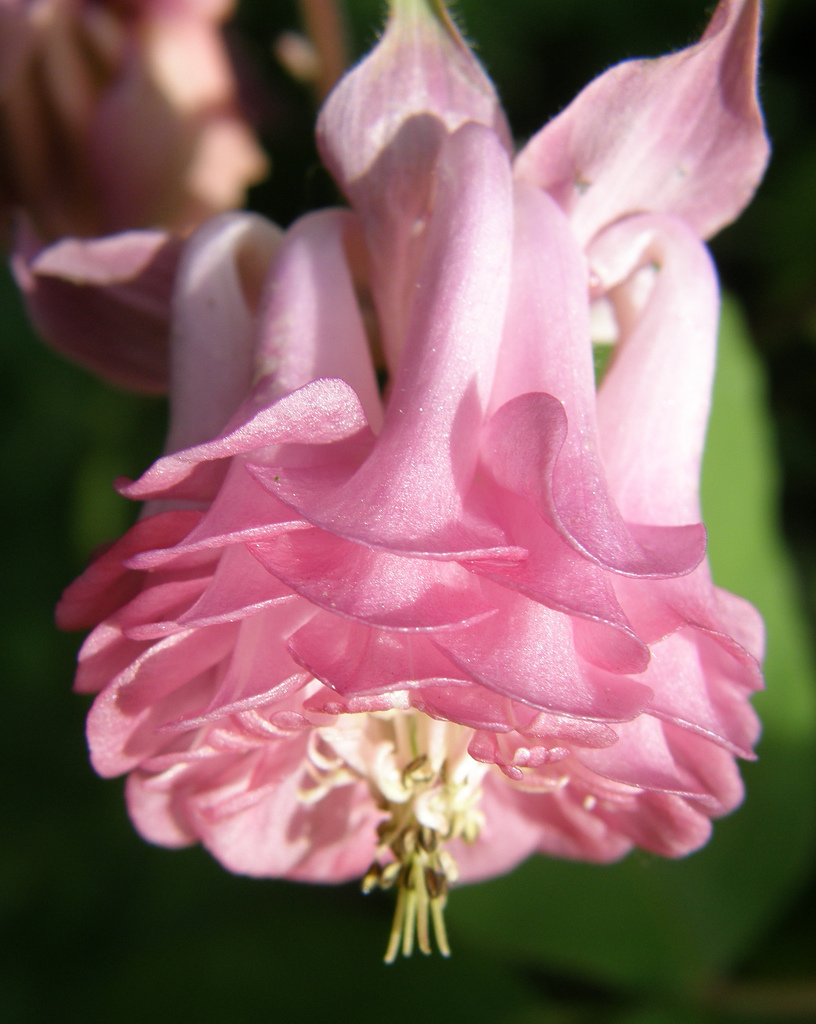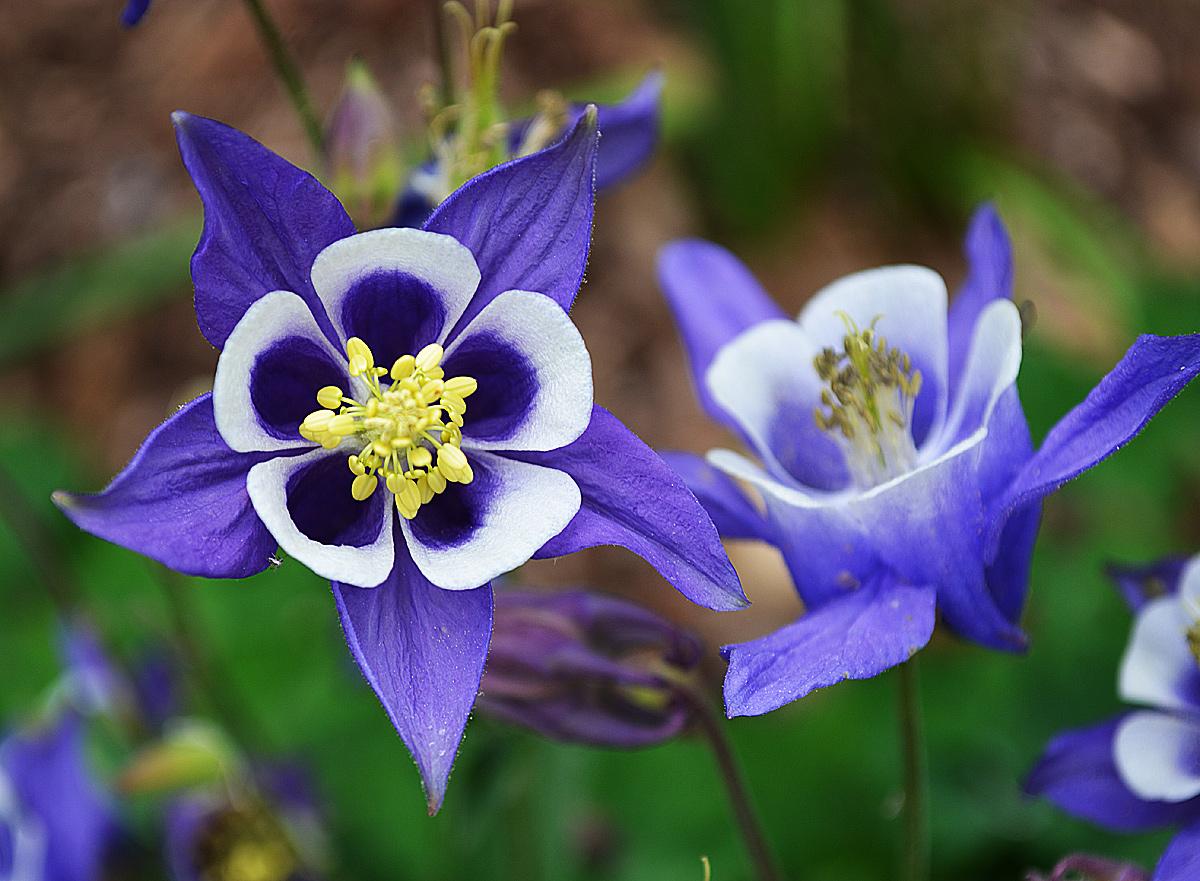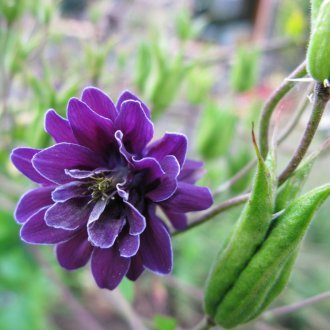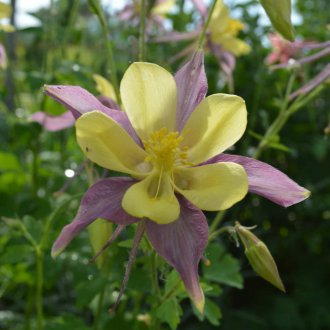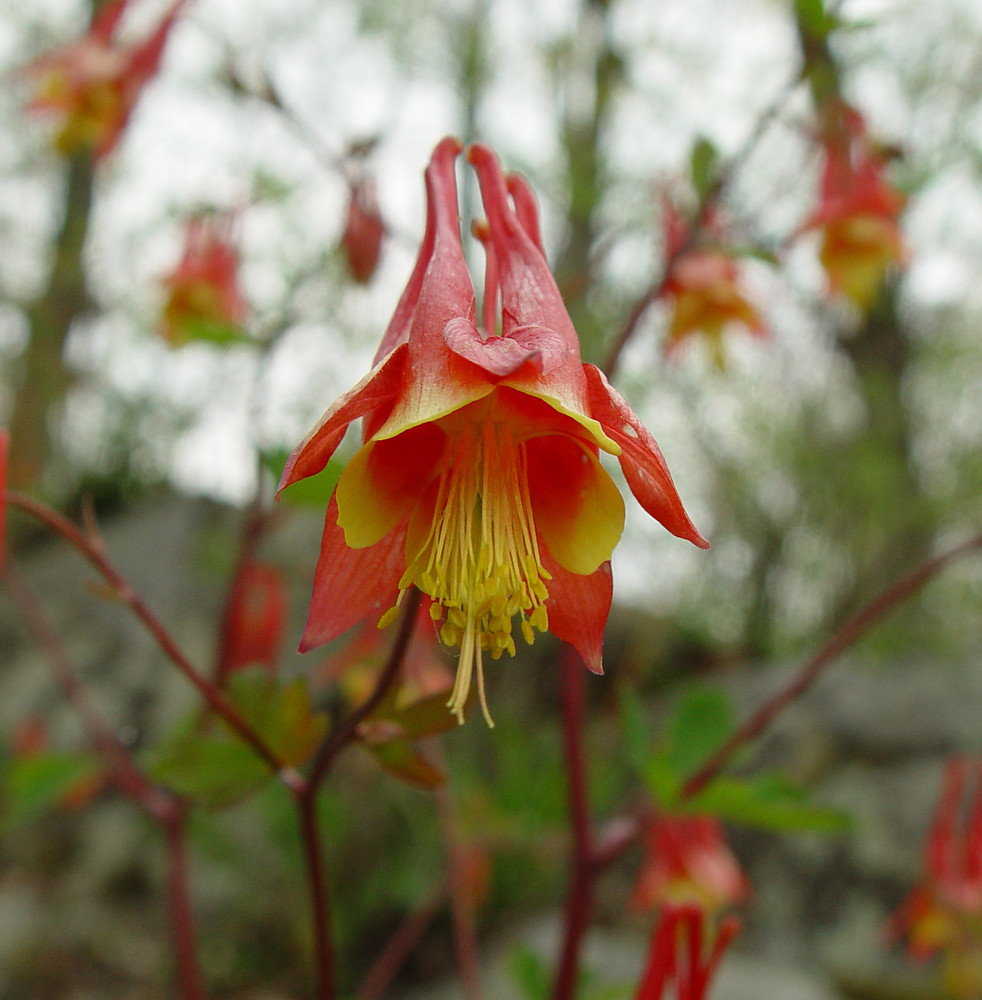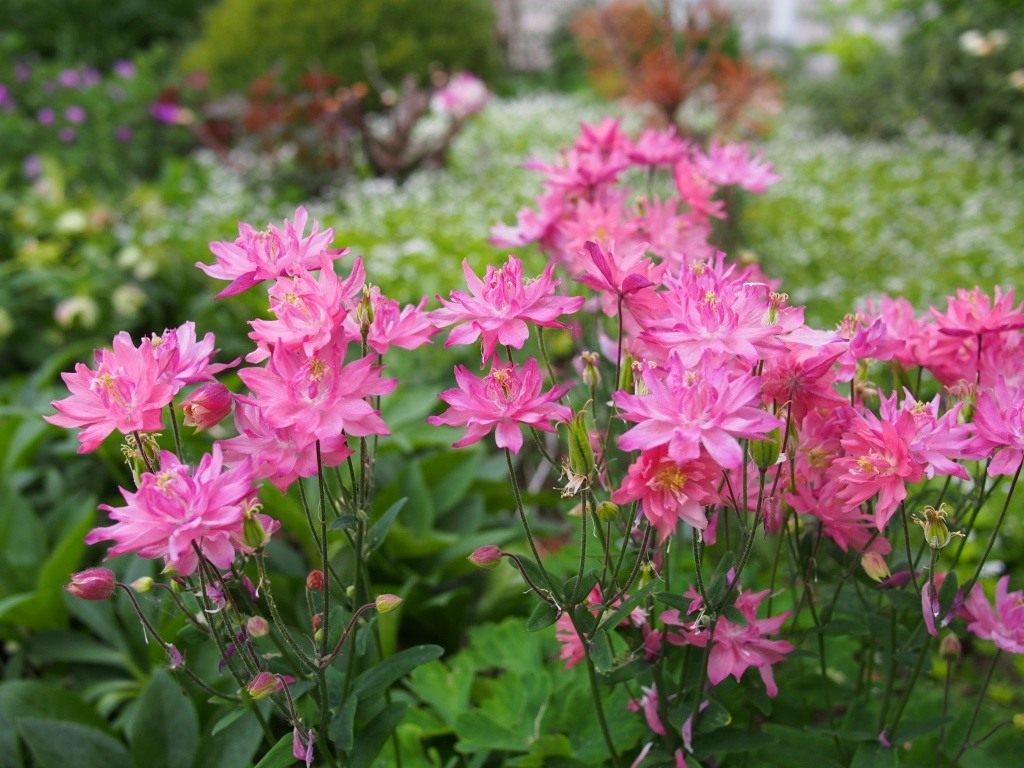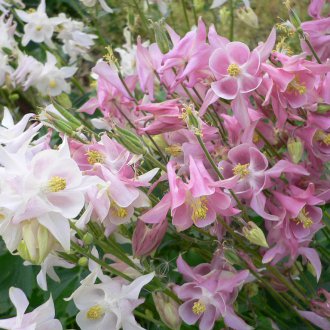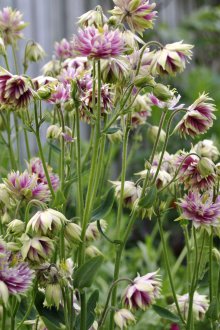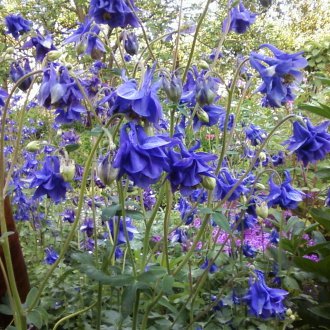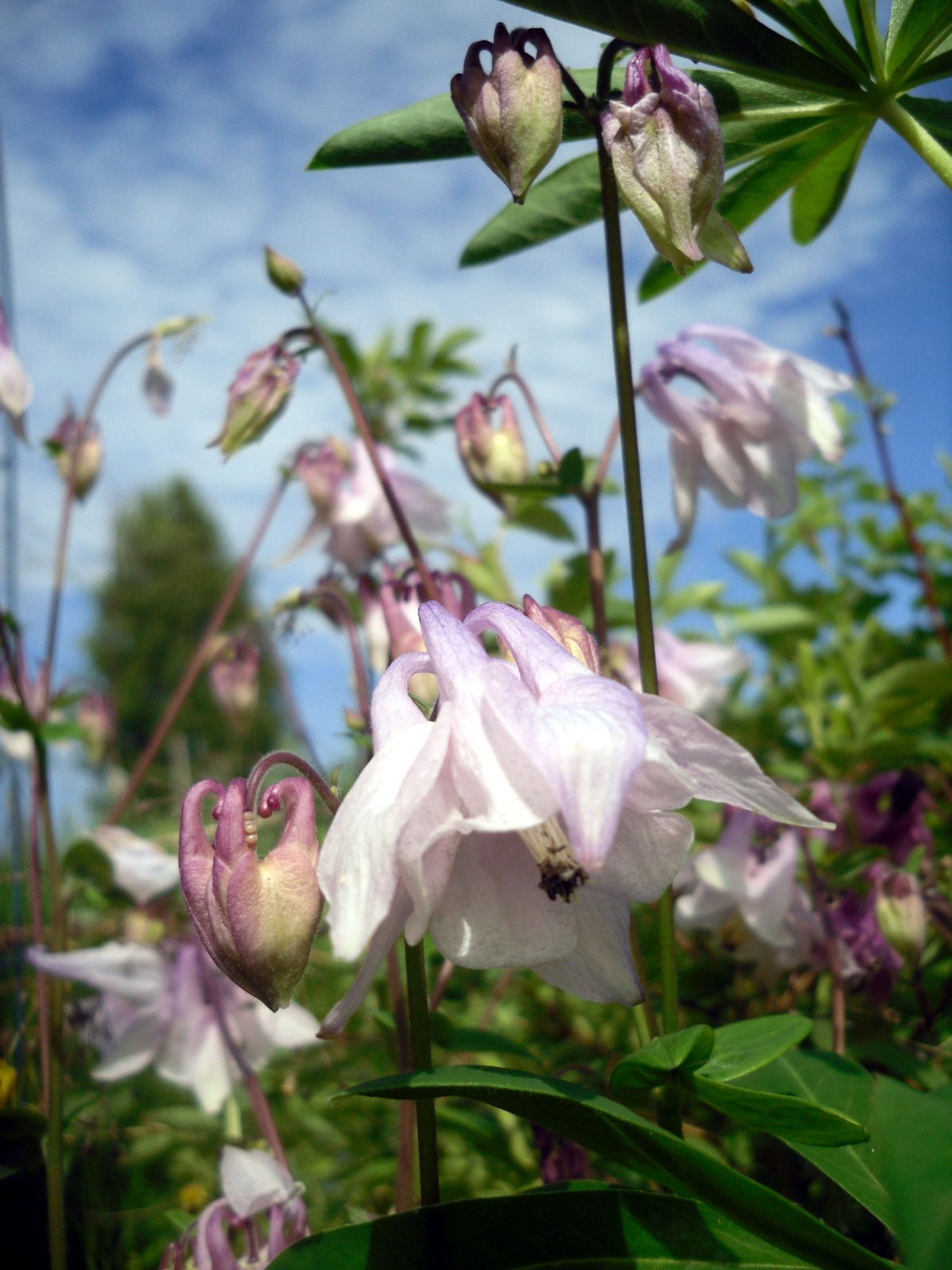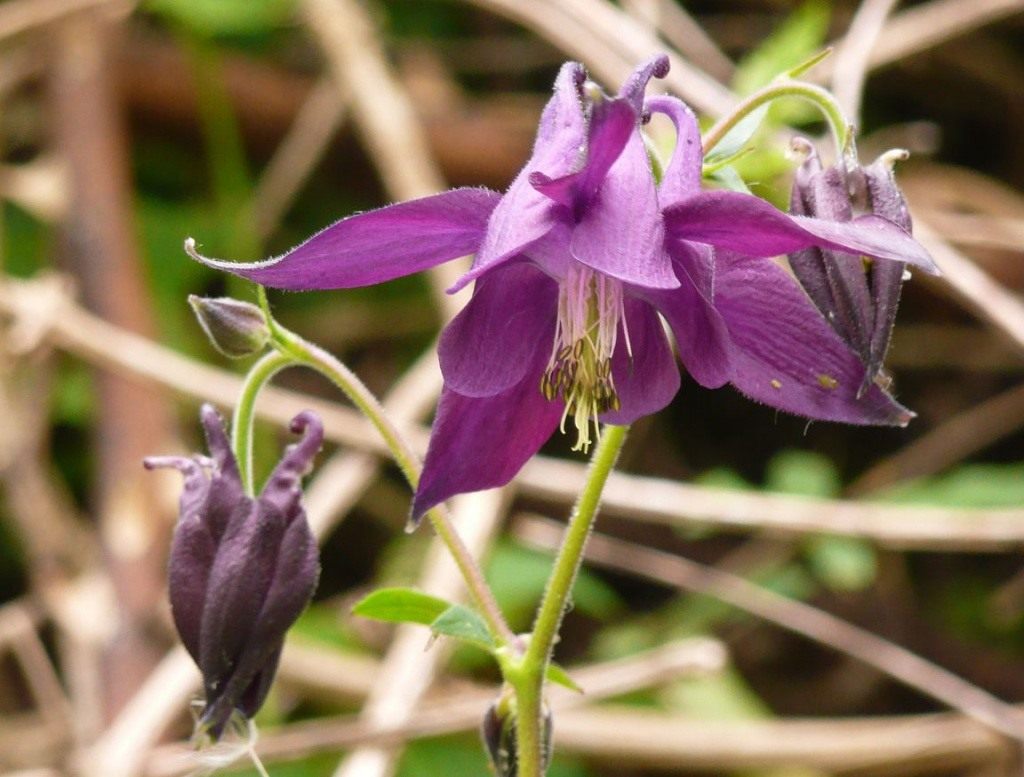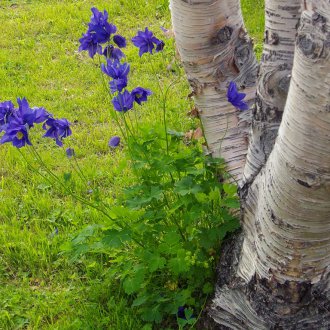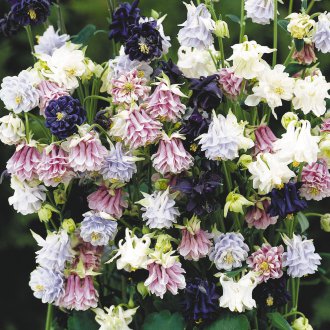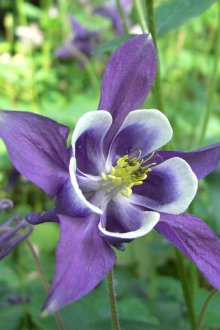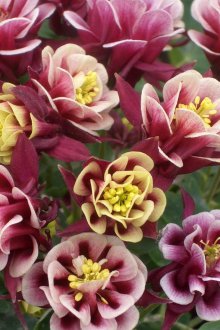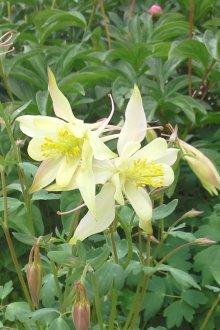Aquilegia at home and on the plot (22 photos)
Content
Aquilegia (Latin: Aquilegia, presumably formed from aqua - water, legere - to collect) - a plant of the Ranunculaceae family. People call it the catchment, columbine, orlik, grandmother’s cap. In nature, there are many varieties of aquilegia from 60 to 120. All these are herbaceous plants for open ground and cultivation at home.
Appearance
The common color of the columbine peduncles is a plain dark blue or dark lilac shade. There is an aquilegia of red, raspberry, snow-white, lilac, as well as two-tone species of eagle. The plant buds resemble bells with a complex structure:
- 5 sepals;
- 5 petals;
- long pestle.
Depending on the type of aquilegia, flower stalks can be with spurs up to 2 cm long, bent by hook or twisted ring-shaped. The leaves are reminiscent of maple leaves. The trunk is high on average 38-51 cm, can grow up to 80 cm. The stem is straight, branched. Inflorescences of the drooping type, single, depending on the type of aquilegia, are of various sizes, but on average 5-6 cm across. Seeds - 5 leaflets 2-3 cm long.
Types of Aquilegia
Of all the varieties of the eagle, 35 are cultivated. Most often, hybrid aquilegia (Aquilegia hybrida) is a symbiosis of European and American varieties. On sale often found Alpine species of eagles (Latin. Aquilégia alpína) with beautiful peduncles of blue shades.
The coldest colombine is called the Common Aquilegia (Aquilegia vulgaris). The plant tolerates cold to -35º C, has inflorescences of purple and blue. At home, only one variety of flower is grown - the Winky indoor aquilegia with rich color and compact bushes (Aquilegia Winky Mixed).
Plant features
A beautiful and optimistic palette of elegant inflorescences attract florists. Similar grassy plants for open ground are a gift for the gardener. It is not difficult to take care of the colombine, it is even easier to breed it - it propagates by self-sowing. The cycle of development of the eagle is two-year. It tolerates dry days well due to the root system, which goes far inland, which allows the catchment to extract water even in difficult weather conditions.
Application
One of the popular destinations where landscape design is used. An unpretentious flower grows in difficult places where other plants rarely survive. Grandmother’s bonnet can be adjacent to the "not allowing" other neighbors spruce. The powerful coniferous root system occupies the upper layers of the earth, while the aquilegia in the flower beds rushes deep into the soil. A columbine with phlox, saxifrage, krupka, cereals, fern, iris, poppies looks good.
Growing conditions and care
Orlik grows well in the open sun, but prefers partial shade. In brightly lit places, it fades faster, and buds are weaker and smaller. The plant prefers well-drained soil, can grow on dry soil. For winter hardiness, grassy plants for open ground belong to zone 3 and withstand temperatures from -34.4º to 37.2º C.In this case, the eagle does not require special mulching with sawdust, straw or sand to protect it from cold weather if its root system is hidden underground.
The optimal soil preferred by grassy plants for open ground should be loose, moist with humus content. Before planting, they dig it to a depth of 20 cm and add compost or humus. The distance between seedlings is 40 cm for tall varieties, 10 cm for short ones.
Why doesn’t bloom?
The plant buds bloom for 2-3 years after planting in the ground. There are minor varieties in which the flowering period could simply end. Perhaps you used top dressing with a high concentration of nitrogen and went too far with it. For the plant to develop properly, proper care is necessary. The main procedures that aquilegia needs are:
- Watering - a plant loves water. Its root system goes deep underground, because the eagle can survive even in severe drought, absorbing moisture from the lower layers of the soil. Nevertheless, the flower garden needs to be monitored and periodically watered abundantly on schedule.
- Top dressing is carried out 2 times during the summer. At the beginning of active growth, a mixture of potassium salt, superphosphate and nitrate is used. In the spring under the bush spread humus or compost with the earth in the proportion: 1 bucket per 11 square meters. m
- Weeding - weeds are removed when their shoots are still young and low.
- After the grown aquilegia reaches a height of about 80 cm, the garter of the plant is done on a peg, bamboo, reed for support.
- Loosening - periodically carried out after rain or watering.
When growing columbines, gardeners face the problem of self-seeding. When aquilegia begins to scatter seeds around itself, young shoots do not have to weed to the end. Experienced gardeners recommend leaving several sprouts of seed material. After 5-6 years, when the time comes to change the old bushes, it will not be difficult to replace them with young shoots.
Winter preparations
When the columbine fades, its stems are cut to the rosette of leaves. Mulching is carried out at the age of 4-5 years, when the roots of the eagles begin to stick out of the ground. To protect them, after removing the stalks, peat, manure or other mixtures are added under the bush. Thus, the plant receives fertilizing before winter and protects itself from the cold.
Cultivation
The best option for growing plants is chosen by gardeners at their discretion. Aquilegia reproduction is carried out in several ways:
- sowing seeds in open ground;
- seedling;
- vegetative: cuttings or division of the bush.
To collect seeds, use gauze bags that are put on flowers. Ideally, sowing is carried out immediately after the collection of planting material, because its germination capacity deteriorates over time. It is best to grow seeds in seedlings. When planting immediately in open ground, germination is worsened.
When to plant aquilegia?
Seeds are sown outdoors in the fall or spring. Transplantation of aquilegia seedlings is carried out in May or later. The time is chosen in such a way as to avoid cooling the soil from night frosts.
How to grow aquilegia from seeds?
Landing immediately in the ground
Before sowing, stratification is carried out. The procedure is carried out by 2 methods:
- Cold - disinfected in a 0.5% solution of potassium permanganate planting material is immersed in a moist substrate and incubated for 1 month. in fridge.
- Thermal - seeds are stored for 30 days at room temperature in cotton or sand. Periodically, the material is wetted.
The place is chosen in such a way as to protect young shoots from scorching sunlight.
Seedling planting
The seeds are soaked for 24 hours in water and then lowered into nutrient soil, which contains a light substrate of humus, turf soil and sand in equal proportions. A newspaper or cloth is placed on top. Containers with seedlings are stored in a darkened room. Periodically, the earth is moistened with a spray gun. After 7-14 days, seedlings appear.
Vegetative propagation: division of the bush
A similar method of reproduction is used in extreme cases. The root system of aquilegia is very deep and fragile, therefore it is transplanted in this way only if you need to urgently undressed an expensive or rare kind of eagle. Reproduction is carried out after the plant fades in early spring or early autumn. To do this, choose a bush of 3-5 years of age. They dig it out carefully so as not to damage the roots. Then washed from the ground, cut shoots and leaves with a height of more than 5-8 cm, with the exception of the 2-3 youngest.
The stalk is cut along the root in half so that in each part there are 2-3 buds and small processes of the root system. The cut is treated with crushed coal. The resulting plants are buried in fertile soil. Periodically seedlings are watered. When the aquilegia is ill, it is planted in the open ground.
Cuttings
The procedure is carried out in the spring when there is no foliage on the aquilegia. The sprout is cut from the growth bud. Its lower part is treated with a root stimulant. Then the stalk is planted in a shady place.
A greenhouse is suitable if it is not possible to plant an eagle in open ground and cover the seedling with a plastic bottle. Periodically, the plant is watered and the lid is removed for ventilation. Rooting should occur in 21-28 days. After this, the plant must be carefully transplanted to a permanent place.
Pests and diseases
Grassy plants for open ground - a breeding ground for numerous pests and bacteria:
- mole;
- caterpillars
- spider mite;
- nematodes;
- Bumblebee species Bombus hortorum;
- rust;
- gray rot;
- powdery mildew.
From moths, ticks and aphids, perennial plants are sprayed with insecticides or infusions of herbs. To repel nematodes, garlic or onions are planted nearby. Gray rot is not treated. Rust is treated with preparations containing sulfur or a solution of laundry soap and copper sulfate. Powdery mildew is sprayed on the plant with a mixture of colloidal sulfur and green soap.
A delicate aquilegia with graceful flower stalks resembling crystal bells will decorate the garden and home interior. Hardy culture is a great way to plant unpretentious and at the same time beautiful plants that require minimal maintenance.


